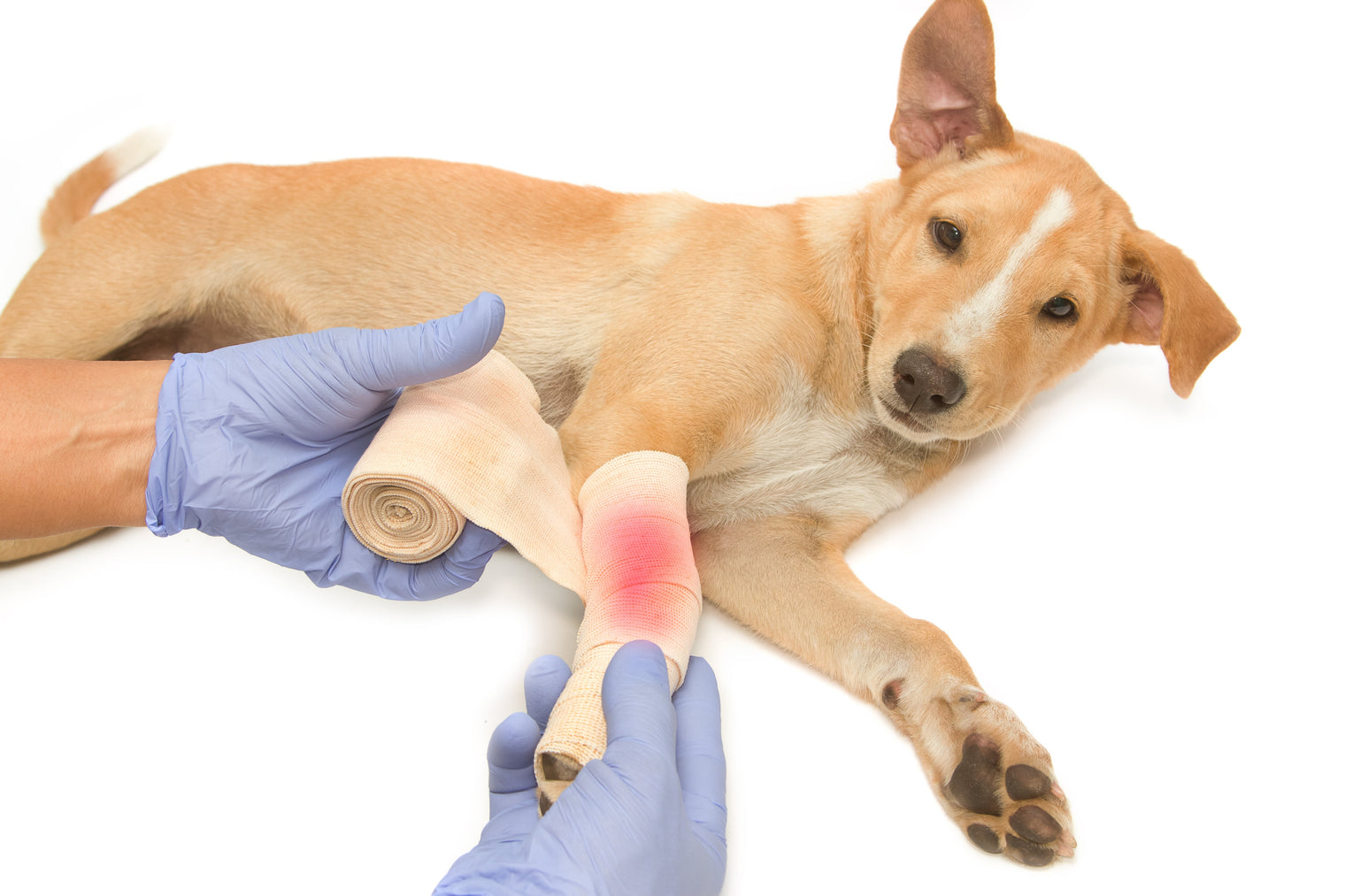Your dog takes longer to get up these days. Their walks are shorter. The playful spark in their eyes dims when faced with stairs. If this sounds familiar, you're among the 80% of dog owners who notice joint changes in their aging pets but feel unsure about what to do.
In 2025, veterinary medicine offers new hope for dogs with arthritis. Recent studies from the American Veterinary Medical Association show that early intervention can add 2-3 years of comfortable mobility to a dog's life. Yet most owners wait too long to start treatment.
In this comprehensive guide, we'll explore:
-
The latest treatments that actually work
-
Early warning signs you can't ignore
-
Simple changes that make a huge difference
-
New research that's changing everything we knew about canine arthritis
Your dog gave you their best years. Now it's time to give them their comfort back.
What Is Arthritis For Dogs?
When your furry friend has arthritis, their joints get inflamed and sore, making movement tougher.
There are different types, with osteoarthritis being the most common. This disease often affects older dogs but can also occur due to injury or genetic predisposition. Understanding this condition involves recognizing its underlying causes and potential risks.
How Arthritis Affects a Dog's Body and Movement:
Dogs with arthritis often show reluctance to perform activities they once enjoyed. As arthritis progresses, these symptoms worsen. This happens because the inflammation causes cartilage to wear down, leading to joint friction. Over time, this reduces flexibility, resulting in noticeable discomfort during everyday activities like walking or climbing stairs.
Demystifying Common Myths About Arthritis in Dogs:
Misconceptions about dog arthritis can hinder effective treatment. One myth is that arthritis only affects old dogs, which is untrue as younger dogs can develop it too. Another misconception is that exercise worsens arthritis; actually, low-impact activities help maintain joint health. Clarifying these myths can lead to better health outcomes.
Effective Treatments For Dog Arthritis
-
Latest medications bring relief and boost health.
-
Physical therapy enhances mobility; real stories inspire.
-
Natural remedies lower inflammation; diet plays a key role.
1. Understanding Current Safety Concerns
Safety is a major concern with arthritis medications. Grapiprant is often prescribed due to its safety profile. It targets inflammation with fewer side effects than older drugs. A study showed this drug significantly improved mobility over four months in young dogs, offering hope for long-term joint health.
2. Canine Joint Pain Relief Techniques
Physical Therapy (PT) is gaining traction for its role in managing joint pain in dogs. Techniques such as massage, stretching, and joint manipulation ease discomfort. Real-world case studies from pet physiotherapists highlight the success of these methods in boosting a dog's quality of life. Dogs undergoing regular PT show noticeable improvements in mobility and happiness.
Immediate pain relief is vital for dogs. Techniques involving heat therapy, and cold packs, offer temporary relief. Various tools, like knee supports and dog ramps, also play a role in facilitating daily activities for arthritic dogs.
Hands-on PT often uncovers unique insights into each dog's condition. This personalized approach can reveal further treatment possibilities.
3. Incorporating Natural Remedies for Dog Arthritis
Natural remedies supplement traditional treatment. Supplements such as glucosamine and chondroitin help reduce inflammation. Omega-3 fatty acids from fish oil are recommended, supported by studies showing their ability to improve joint health.
Diet is pivotal in managing arthritis symptoms. Balanced meals with anti-inflammatory properties can significantly affect arthritis progression. Owners should consider offering diets rich in lean proteins, whole grains, and certain vegetables to manage weight. Obesity is a known exacerbator of arthritis, putting extra pressure on joints.
4. Weight Management: A Crucial Component
Maintaining a healthy weight is necessary for any arthritis treatment plan. Excess weight burdens the joints, increasing inflammation and pain. Studies stress the role of proper diet planning to help dogs reach and maintain an ideal weight. Veterinarians often suggest tailored meal plans to ensure dietary changes lead to effective weight loss without compromising nutrition.
Owners witness considerable symptom relief simply through weight management. This effort requires consistency in diet control and active monitoring. Exercise, though reduced, should remain part of the routine.
5. New and Emerging Treatments
Emerging treatments such as stem cell therapy and platelet-rich plasma (PRP) injections show immense promise in managing arthritis symptoms. They focus on healing rather than just pain relief. Promising studies indicate PRP injections lead to reduced pain and increased mobility over time. Conditions improve significantly, offering an optimistic outlook on future treatment plans.
Technologies like laser therapy and electrical stimulation add new dimensions. They offer alternative routes for reducing pain and inflammation. These treatments may be ideal for dogs with severe arthritis intolerant of medications. Owners should consult with veterinarians to explore these as long-term options.
Recognizing Signs of Arthritis in Dogs Early
-
Watch for signs like mood changes and activity reluctance.
-
Learn to check for arthritis at home.
-
See why vet visits are key for catching it early.
Common Symptoms Owners Notice
Identifying arthritis early in dogs hinges on observing subtle changes. Dogs with arthritis often show shifts in behavior that may look like grumpiness or being less social. This might not seem like a big deal, but changes in mood often point to discomfort or pain. Over weeks or months, these dogs might shy away from being touched or petted, which can be especially apparent when petting areas like joints or hips.
Next, let's talk about activity reluctance. This can manifest in dogs hesitating or refusing to do things they used to enjoy, such as going for walks or playing fetch. They might lag on walks or need to be coaxed up stairs or into cars. Long-time dog owners share anecdotes about pets dropping usual habits, like jumping up to greet people, as one of the first noticeable symptoms. Such testimonials highlight the need to act when these early signs pop up.
Behavioral Changes Over Time
Monitoring over time is important. As arthritis progresses, signs might become more obvious. Dogs may seem tired or spend more time resting. You might notice them limping more often, especially after exercise or waking up. These changes can indicate different levels of pain. It's essential to keep a diary of these changes to help your vet pinpoint the issue.
How to Check a Dog for Arthritis
Checking for arthritis doesn’t always mean a trip to the vet. There are things you can do at home. Begin with a gentle range of motion test. Move their legs and watch for reactions like flinching or pulling away. Feel the joints for any swelling or unusual heat. Compare both sides to identify any differences that might suggest a problem.
Conducting a Professional Examination at Home
For a more thorough check, have your dog stand, sit, and lie down while you look for signs of stiffness or uneven weight distribution. Pay close attention to their joints and muscles. Sweet spots for arthritis in dogs include hips, knees, and elbows. Be sure they’re not yelping or showing distress, as this indicates discomfort.
Next, incorporate regular vet visits. Vets can recognize nuanced symptoms that are easy to miss. They might use X-rays or joint fluid analysis to confirm an arthritis diagnosis. Veterinarians stress that regular check-ups can increase the chances of catching arthritis in its early stages, which can lead to more effective management.
As the condition advances, flares might look like sudden stiffness or swelling. Knowing these can prepare you to help your pet feel better quickly. Dogs with arthritis have varied lifespans, and catching signs early contributes positively to their quality of life. It's all about proactive care and continual observation.
Effective Exercises for Dogs with Arthritis
Exercises That Improve Joint Flexibility
Regular, controlled exercise remains a cornerstone in arthritis management. Low-impact exercises like swimming and underwater treadmill sessions are highly recommended. They aid in maintaining muscle mass and joint flexibility without adding undue strain.
How to Balance Rest and Activity
Finding the right balance between rest and exercise is crucial in managing arthritis. Veterinarians suggest structured, regular activity sessions interspersed with sufficient rest to prevent overexertion. Overdoing physical activity can exacerbate symptoms. Tools like activity monitors that track a dog's movements help caregivers determine optimal activity levels.
Dog Trainers' Advice on Maintaining Activity Safely
Dog trainers specializing in arthritic care emphasize the importance of gradual intensity increases and closely monitoring the dog’s response. They advocate for incorporating variety in exercise routines to keep dogs engaged without overloading particular joints.
Maximizing Wellness for Dogs with Arthritis
Plans for Maintaining a Quality Life:
To maintain quality of life, structured care plans are essential. This involves balancing medication, diet, and physical activity. Owners should work closely with veterinarians to develop these plans, which should be tailored to the dog's condition and adapt over time to ensure long-term health.
Real-Life Action Plans from Vet Consultations:
Veterinarians recommend joint supplements, diet modifications, and specific exercises. They emphasize the importance of regular appointments to track progress and tweak treatments as needed. These action plans enable better management of arthritis, reducing pain and enhancing the dog's overall well-being.
List Of Supplements That Help With Dog Arthritis
List our products here and how they help
Conclusion
Managing dog arthritis requires attention, care, and dedication. The treatment options in 2025 have expanded, giving pet owners more tools to help their dogs live comfortably. From advanced medications to physical therapy and natural remedies, each approach plays a vital role in managing this condition.
The key is to spot the signs early. Watch for changes in your dog's behavior, movement patterns, and energy levels. Work with your vet to create a treatment plan that fits your dog's specific needs. Remember that what works for one dog might not work for another.
Your dog's quality of life depends on consistent care and monitoring. Stay informed about new treatments, maintain regular vet check-ups, and adjust your home environment to support their mobility. Small changes like adding non-slip mats or adjusting exercise routines can make a significant difference.
The future of canine arthritis care looks promising. New technologies and treatments continue to emerge, offering hope for better management options. Your commitment to understanding and addressing your dog's arthritis symptoms will help ensure they stay active, comfortable, and happy throughout their golden years.
Take action today. Start with one change in your dog's routine. Their comfort and well-being are worth every effort.

